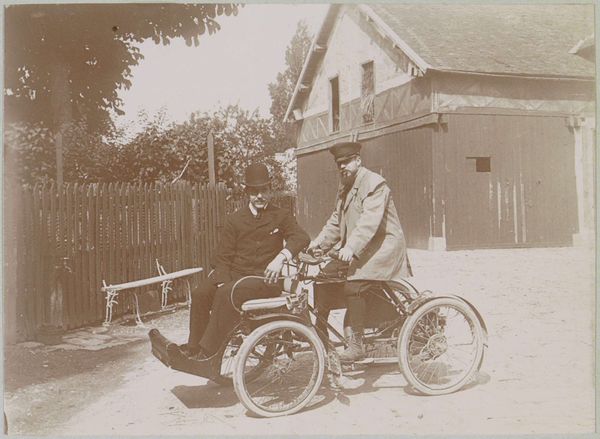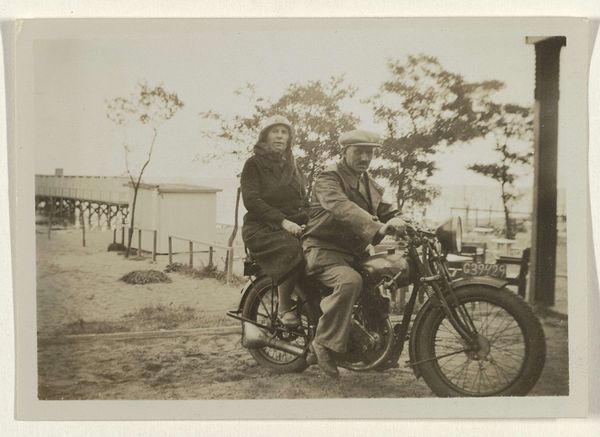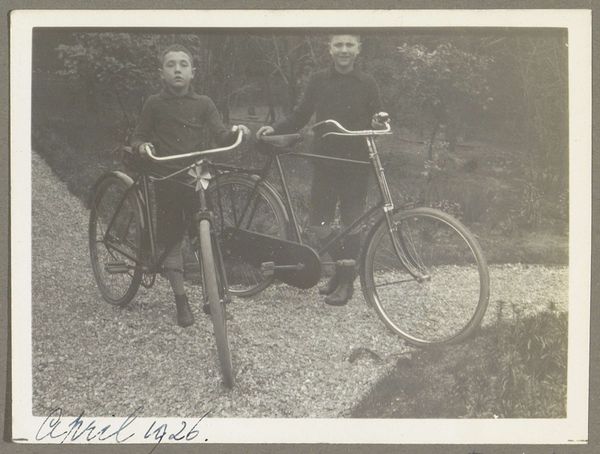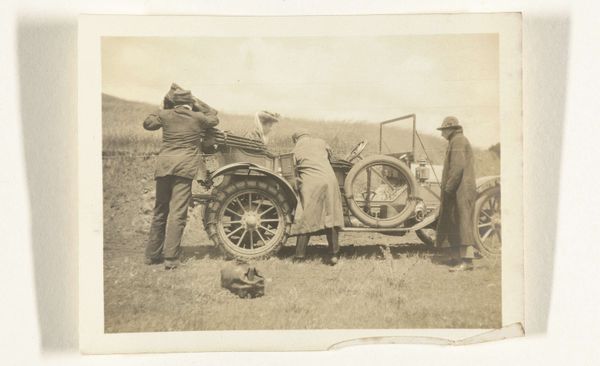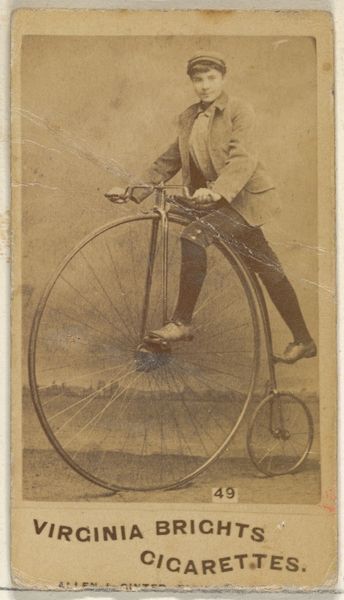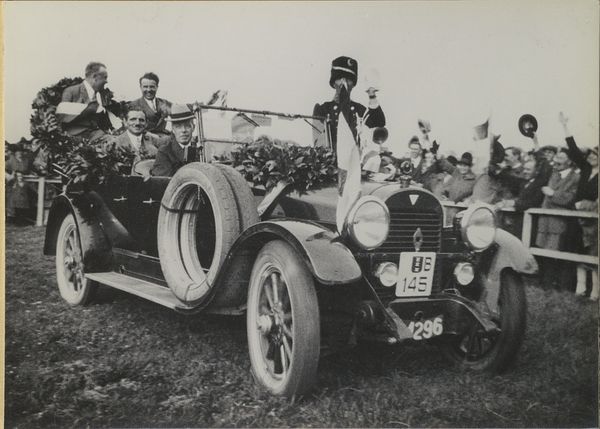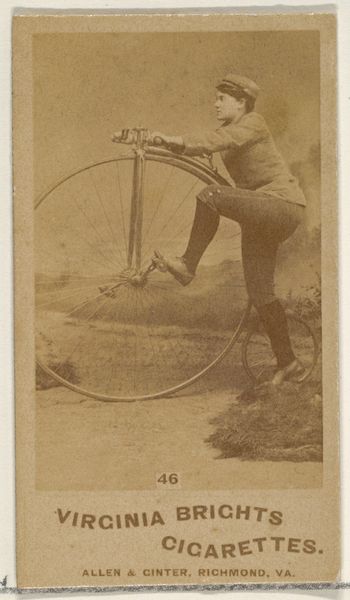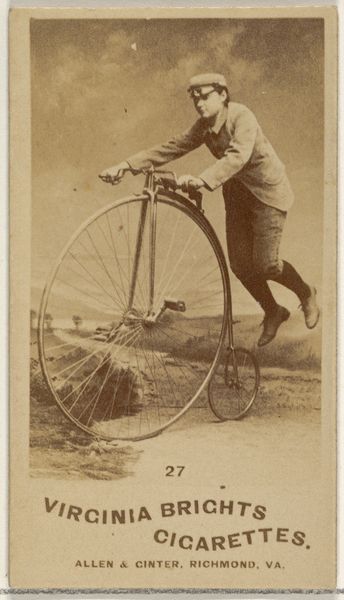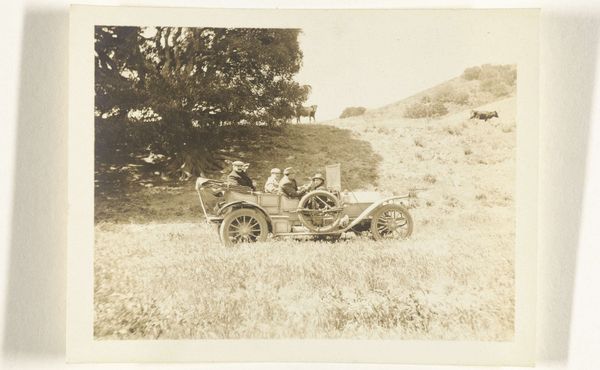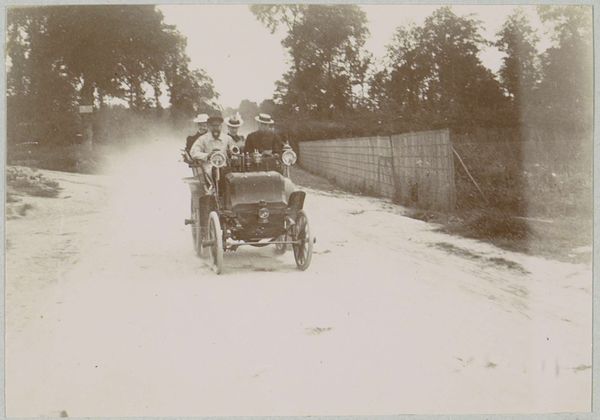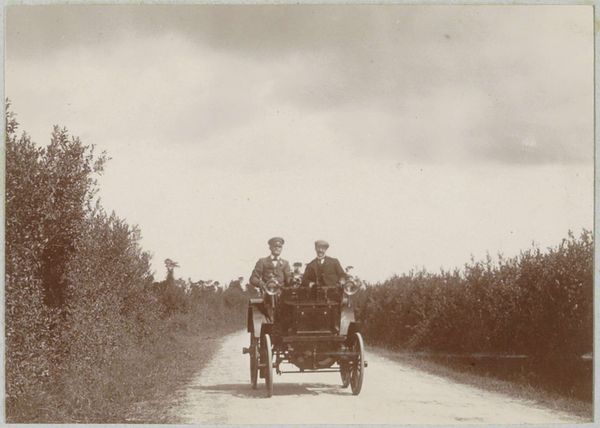
photography, gelatin-silver-print
#
portrait
#
landscape
#
photography
#
gelatin-silver-print
#
modernism
#
realism
Dimensions: height 53 mm, width 79 mm
Copyright: Rijks Museum: Open Domain
Editor: This gelatin-silver print, dating from around 1930 to 1935, is titled "Johannes van Zijll de Jong rijdt op een motor," which translates to "Johannes van Zijll de Jong Riding a Motorcycle." The realism is compelling and intimate; the subject's intense concentration on riding the motorcycle projects so much into the setting. What can you tell me about how social changes may have played into this imagery? Curator: Well, photographs like this reflected and shaped evolving ideas around modernity and individual freedom. Motorized transport was no longer purely functional; it gained social prestige. Do you notice the clothing of the subject? How does that inform your opinion? Editor: The subject's jacket and tie, while perhaps informal compared to prior styles, certainly aren't the typical biker "look" one might imagine. They suggest the photograph may have been produced for private display, yet, by employing popular public subjects such as machines, the photographer invites consideration about how public roles of art and machinery were changing during the 1930s. Curator: Precisely! Consider how such images became popularized during a period of rising advertising and the broader use of photojournalism; photographic images like this captured ordinary citizens, elevating them to models. Does that influence how you view the image as art? Editor: It makes me wonder who commissioned this shot and where they might have displayed it. To me, it blurs the lines between a private portrait and a sort of public service announcement advertising a modern lifestyle, while showing someone enjoying life! Thanks. Curator: I agree that's quite thought-provoking. Now you're really thinking about the contextual significance! It illustrates how advancements influence art as both a reflection and construction of modern life.
Comments
No comments
Be the first to comment and join the conversation on the ultimate creative platform.
